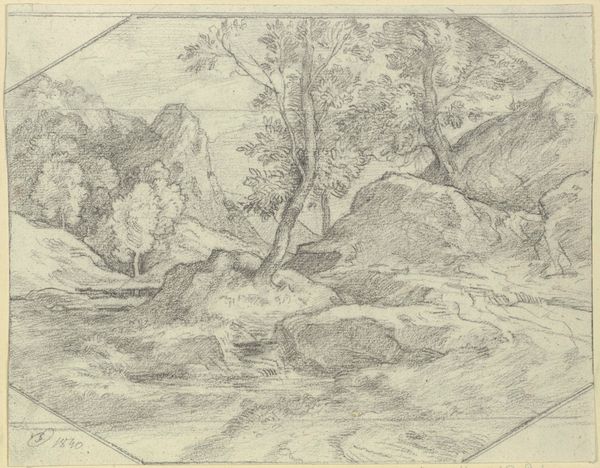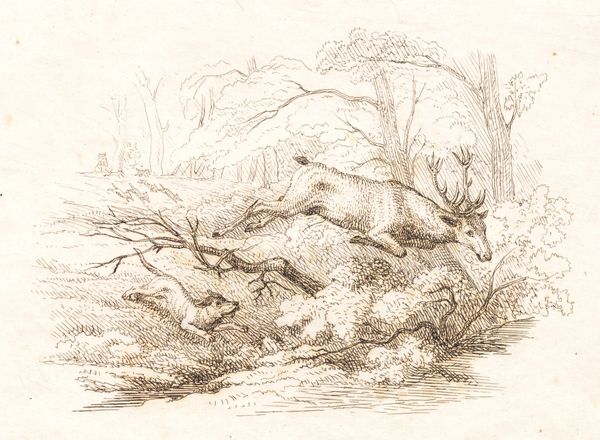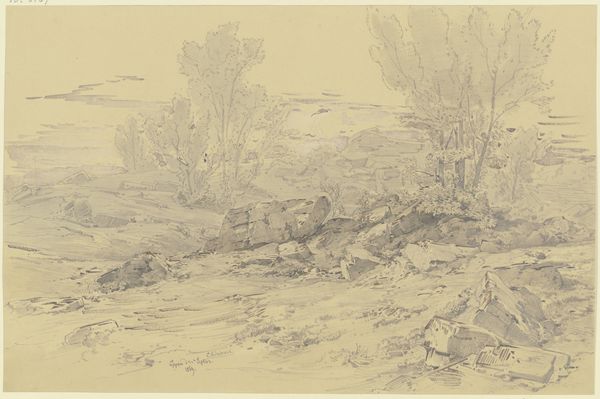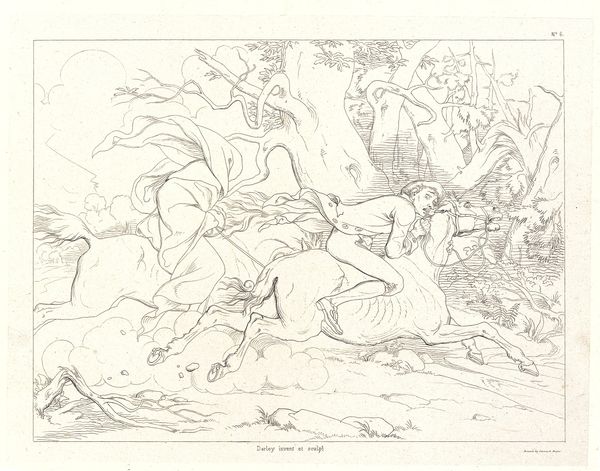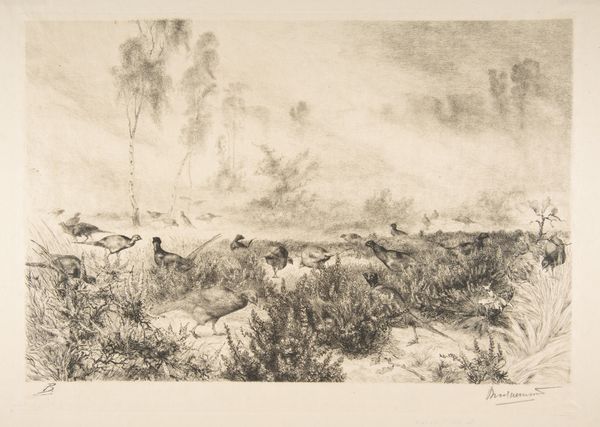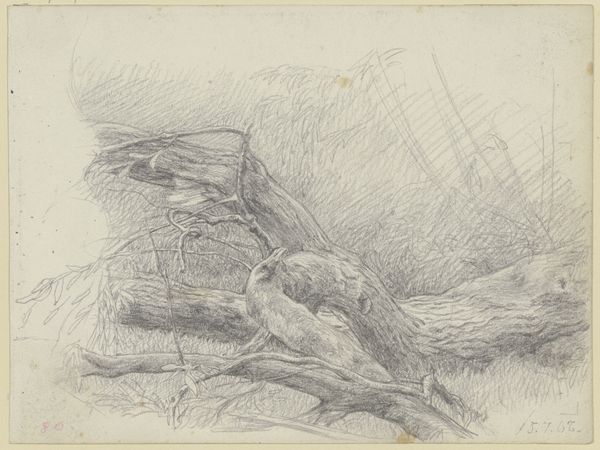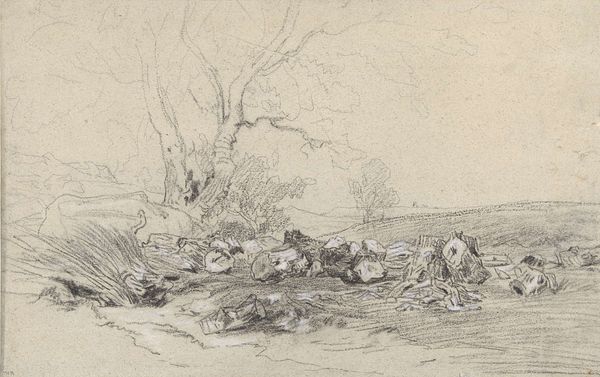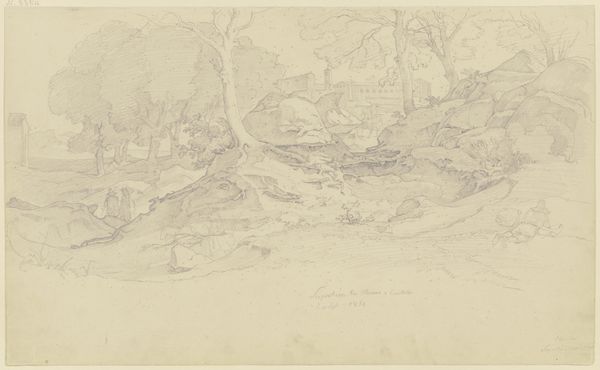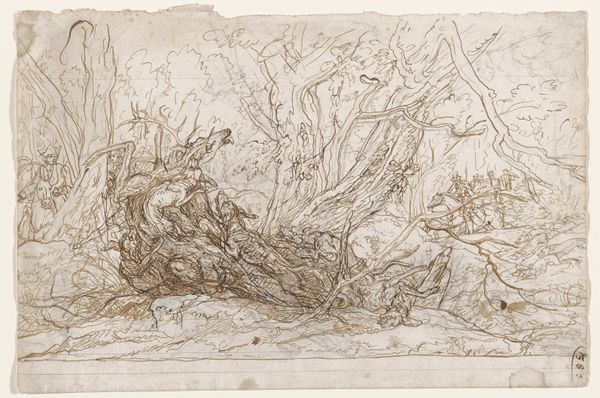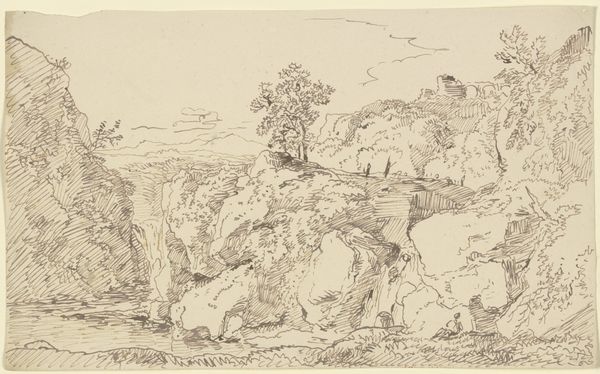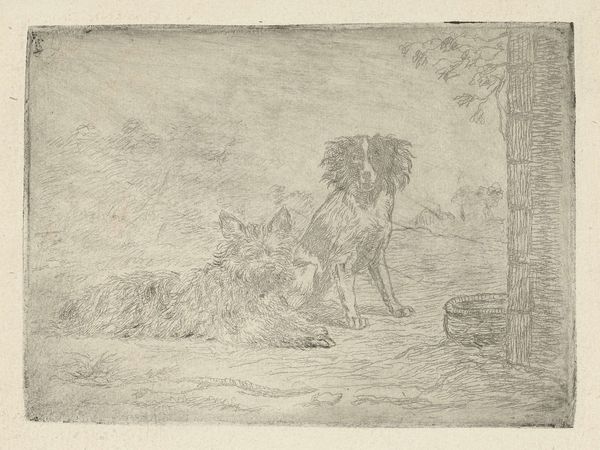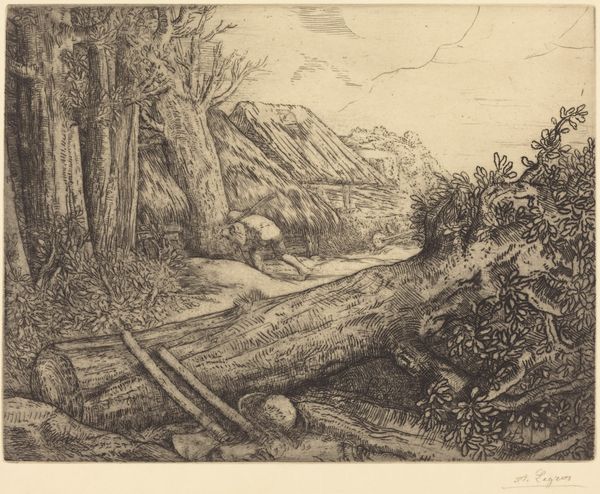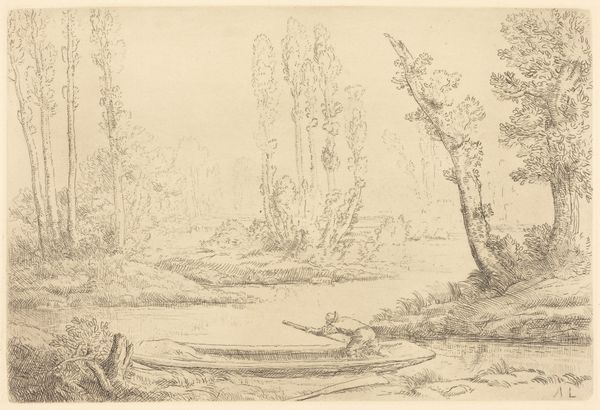
drawing, paper, pencil
#
drawing
#
landscape
#
paper
#
pencil drawing
#
pencil
#
realism
Copyright: Public Domain
Editor: So, this is "Waldbach," a pencil drawing by Karl Peter Burnitz. The level of detail is quite impressive, almost photographic. How do you read a landscape drawing like this, beyond just its surface representation? Curator: It's tempting to see it merely as a pastoral scene, but consider the historical context. Burnitz, like many artists of his time, was grappling with the rapid industrialization reshaping the world. Landscape art became a space for exploring anxieties about modernity, reflecting on the lost harmony between humans and nature. Does that shift how you view this seemingly tranquil scene? Editor: Absolutely. There’s almost a sense of melancholy now, thinking of what’s being lost or altered. Are there other details in the drawing that speak to these ideas? Curator: Look closely at the arrangement of the rocks, the tangled branches. Nature isn't presented as perfectly ordered or easily tamed. It evokes the power of the natural world to push back against attempts to control it. There's a quiet resistance embedded in the seemingly simple depiction of the stream. What feelings does that awareness raise for you, now? Editor: It makes me think about today’s environmental crises. The drawing becomes less a record of a place and more a call to acknowledge the delicate balance we’re disrupting. It's quite sobering. Curator: Precisely! Art acts as a mirror reflecting the ever-changing negotiations between humanity and its environment. By seeing it as a conversation, not just a picture, we deepen our understanding and awareness of crucial ecological, political, and ethical perspectives. Editor: I will certainly never look at a simple landscape the same way.
Comments
No comments
Be the first to comment and join the conversation on the ultimate creative platform.
